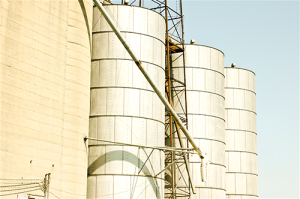The Safe Quality Food (SQF) is a food safety certification scheme. It is an integrated management system for food safety and quality, supported by a comprehensive certification program designed to meet the needs of buyers and food suppliers worldwide.

The SQF Program was launched in 1994 and since 2004 it has been administered by the SQF Institute (SQFI), a division of the Food Marketing Institute (FMI). During the development of SQF, hundreds of food standards were reviewed worldwide including HACCP, CODEX Alimentarius, ISO 9001 and the National Advisory Committee on Microbiological Criteria for Foods (NACMCF). All the above standards are proven methods used by the food industry to reduce the incidence of unsafe products reaching consumers in the marketplace.
The SQF is a food safety program that also covers product quality and process. It is recognized by the Global Food Safety Initiative (GFSI) and links primary production certification to food manufacturing, distribution and agent/broker management certification. This program comprises two codes:
- SQF1000 is a Hazard Analysis Critical Control Point (HACCP), quality-based supplier assurance code designed for producers of primary food products.
- SQF2000 is a rigorous and internationally-credible food safety management system for manufacturers, distributors and agents of food and beverages, and may be used by all sectors of the food industry.
The SQF Code applies to all players along the supply chain including primary producers, manufacturers, distributors, and brokers. The SQF Code has different requirements specific to different industry segments, meaning that many different types of food companies can use the SQF Code to build a system that is right for them. This is achieved by organizing the requirements into different modules. Each organization must identify the modules that apply and meet those requirements.

SQF compliance allows food safety and quality systems to be verified and validated throughout the food chain, increasing brand protection, consumer confidence, and loyalty. SQF is recognized by retailers, foodservice providers, and regulatory agencies around the world that require HACCP food safety and quality management systems by their suppliers. Other benefits of using SQF are:
- Global recognition
- Enhanced marketing image
- A platform for consistent improvement
- Improved process management
- Increased yield by reducing material waste
- Ensuring food safety requirements are addressed
- Compliance with regulatory requirements
The latest edition of the SQF Code is 7.2 which was released in 2014. This Code is divided into three certification levels. Each level is designed to indicate the level of development of a supplier’s food safety and quality management system as follows:
- Level 1 Food Safety Fundamentals
- Level 2 Certified HACCP Food Safety Plans are recognized by GFSI.
- Level 3 Comprehensive Food Safety and Quality Management Systems exceed the GFSI benchmark requirements. (If SQF level 3 is achieved organizations can use the SQF quality mark on their products.)
An organization can choose which level it will pursue certification for. It is also possible to start at one level and move to the next in the future.
ISO Terms Explained

To the novice quality manager, ISO jargon can be extremely overwhelming. What is an NCR? What do you mean by OFI? Are we certified or accredited? But before you go and pull out your hair, let’s take a moment to go over some of the most frequently used terms and their definitions with regards to ISO and Management System Certification.

